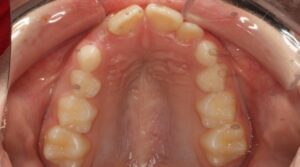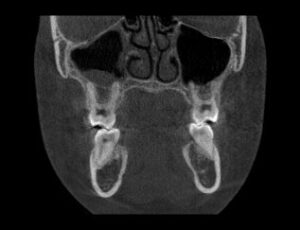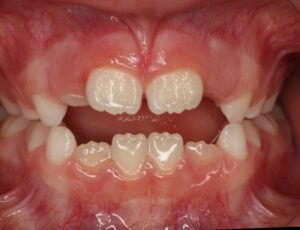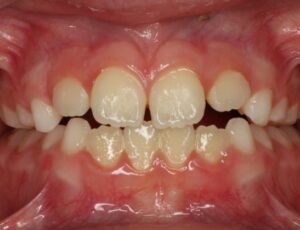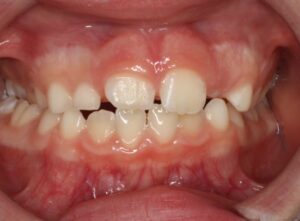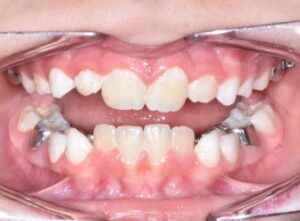Upper jaw expansion, if needed, is probably the single best treatment you can do for the developing child. The benefits are numerous:
- Children with a narrow upper arch are more likely to have Sleep Disordered Breathing (SDB) which includes Sleep Apnea
- Children with deficient hearing have an improvement after upper jaw expansion
- Improvement in Halitosis
- Improvement in nasal breathing- upper jaw expansion has been shown to decrease nasal resistance

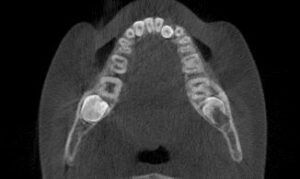 (Before expansion) (After expansion, airway enlarged)
(Before expansion) (After expansion, airway enlarged)
- Increased size of upper airway
- Decreased bed wetting
(Before expansion tongue in low (Normal tongue position after expansion, tongue thrust position) tongue in roof of mouth)
(Before expansion and tongue thrust (After expansion and resolution of treatment) tongue thrust)
- Decreased tongue thrust- normalize tongue position which helps in speech
- Improvements in cognitive functions by Sleep Disordered Breathing (SDB) patients after expansion because their sleep quality improves so can function better during day.
All this, and there is no mention yet of the skeletal and dental improvements which are achieved with upper jaw expansion.
- Correcting a functional shift caused by constricted upper jaw with a posterior crossbite allows the mandible to close normally without shifting. This reduces the stress on the TM joints and the potential for asymmetric growth of the condyles.
- Developing enough space skeletally to resolve crowding and negate the possibility of extractions later.
- Improve the path of eruption of maturing teeth. Allowing them to erupt into supporting gingivae and thus develop healthy gingiva.
- Develop a full smile with upright posterior teeth which fill the buccal corridors for maximum esthetics.
Best Age?
We’ve covered all the benefits of upper jaw expansion. Now let’s understand when is the best age for expansion. Research has shown the best time is between the ages of 6 and 10 if you want to maximize the above benefits plus increase the stability. The upper jaw is very malleable during this stage of development so if expanded properly the upper jaw responds well and the results are stable, long term.
This type of expansion is skeletal, the other type of expansion is dental, this is when the teeth are tipped out which is not stable. Prior to age 10 expansion is about 85% skeletal 15% dental, as the child ages the numbers reverse. By 17 y.o. the ability to get skeletal almost zero.
Type of Expander?
The last area of concern is the type of expander used. Again we rely on good research to experience to choose the expander. The fixed quad helix is the top expander for results achieved. We have been using a specifically designed fixed quad-helix for 20 plus years. We custom design the appliance for not only posterior expansion but also anterior expansion, tongue restraining in tongue thrusting patients and crib for finger sucking. By doing this we don’t have to use different appliances and can treat multiple areas with one appliance. The expansion requires 6-8 months with 6 months retention for long term stability.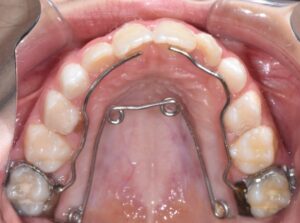
Don’t hesitate to contact us if we can be of any help!


